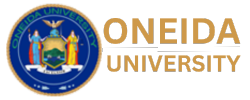In the course of recent years scarcely a day has passed without an article about monstrous open online courses, or Moocs. Pundits dissented that Moocs would mean the end of higher training as we knew it. Supporters hailed Moocs as the rescuer of higher training later on.
The jury is still out on the capability of Moocs to either pulverize or spare higher training. Anyway quietly, and without much debate, an alternate potential “interruption” is occurring: competency-based degrees.
In spite of the fact that this is an overall pattern, this article will concentrate on competency-based degrees in the United States.
The lexicon characterizes competency as the nature of being satisfactorily or generally qualified physically and cannily. The Western Governors University, established by a consortium of 19 states, has honored advanced educations focused around evaluations of learning since 1997.
The college characterizes competency-based instruction as permitting understudies to gain a higher education through show of aptitudes and learning in an obliged branch of knowledge through an arrangement of precisely outlined appraisals.
Understudies take tests, compose papers and complete assignments. But instead than concentrate on seat time or credit hours, degrees are granted through substantial proof of learning. Conclusions and evaluations are the bookends of competency-based learning.
The US Department of Education is intrigued by supporting competency-based learning in light of the fact that 37 million Americans have some school credits however no degree. To help this activity, the office as of late welcomed universities to submit programs for attention under Title IV elected fiscal support that are not focused around time used in the classroom.
Universities and colleges in New Hampshire, Ohio, Michigan, Arizona and Wisconsin raced to meet the due dates set by the office for competency-based degree support.
A few state instructive offices have effectively actualized the instruments to recompense scholars credits focused around earlier learning and appraisal. Also understudies are qualified to accept fiscal support to aid in degree consummation.
Different Pathways:
In 1893 Charles Eliot, president of Harvard, acquainted with the National Education Association the idea of the credit hour. One hour of address time a week for a 12 week to 14 week semester. The seat-time framework was focused around the hours used in the classroom.
More than a century later Jamie P Merisotis, president and CEO of the Lumina Foundation, challenges the credit hour framework. He composes: “Competency is a learner focused, learning-conclusion based model. Where you get the instruction is auxiliary to what you know and can do.”
Competency-based learning spares people both time and cash and makes various pathways to graduation. It takes into consideration online and mixed learning and for more noteworthy adaptability in mapping out a way to procuring a professional education.
Competency-based learning takes into account customized learning open doors, double enrolment and better utilization of innovation. (Is this not what Moocs should do?)
In the United States, competency-based degrees are perceived by bosses for enlisting, advancement and progression.
The Council for Adult and Experiential Learning keeps up that competency-based learning gives understudy a skeleton for comprehension what they are required to learn and how they are relied upon to apply that learning, and businesses are progressively looking for specialists who can exhibit the capability to adjust to new workforce challenges.
Push backs are Inescapable:
In a January 2014 review of boss scholastic officers, half concurred that competency-based training could build the amount of learners with school accreditation, however stress that it would harm general instruction. Commentator’s battle that competency-based learning can possibly weaken the estimation of an advanced education (Is this not what Moocs should do?).
Digital Learners:
There is sufficient proof to backing the conviction that the customary scholarly and managerial structure of higher training is evolving.
Engineering is rendering the conventional semester out of date, the Khan Academy is setting up another era of advanced learners and despite the fact that the jury is still out on Moocs, numerous personnel would concur that Moocs will assume some part in how courses are conveyed and how understudies learn later on.
Change is certain both for the foundation and for the directors who help school and college structures. Numerous schools and colleges could tackle some of their monetary issues by offering people a menu of choices to consider, including mixture programs, internet learning, Moocs and competency-based learning.
These instructive conveyance instruments can supplement, not supplant, classroom guideline. Competency-based learning can possibly reevaluate higher instruction as far as proficiency, adequacy and decency. This is the thing that the general population, officials and bosses are requesting.
Competency-based learning is not for everybody. Likewise with Moocs, this is an exceedingly taught technique for learning. Just individual people can figure out whether they have the inspiration and determination to procure an advanced education through evaluation and competency.
Understudies from around the globe, and from rising economies, particularly African people, are more prone to grasp elective instructive conveyance systems. Competency-based learning can possibly build, not shrivel, enrolment later on.
For some schools and colleges it may mean money related solidness and survival later on and is a “disturbance” worth investigating.



